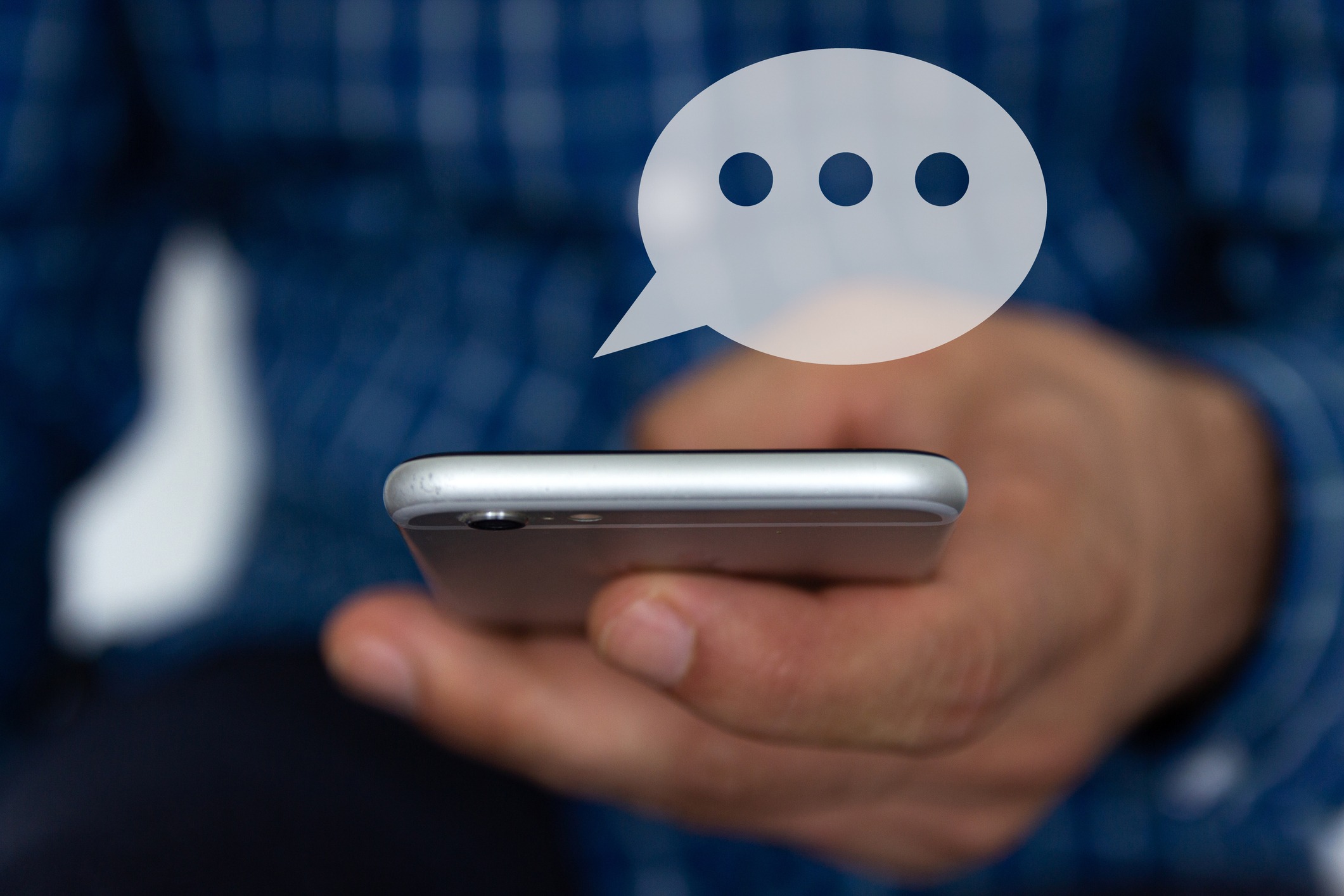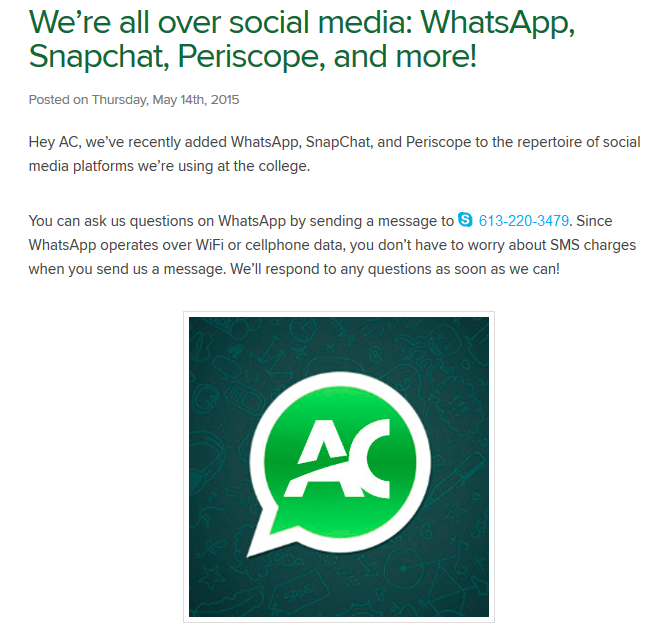For most non-millennials, the first time instant messaging app WhatsApp appeared on their radars was when Facebook purchased it last year for the astronomical sum of $22 billion in cash, shares and stock. The Californian company has grown exponentially despite a defiantly anti-advertising approach largely on the strength of its straight-forward interface, innovative development and word-of-mouth hype. Read on to discover what potential WhatsApp for schools could have in store!
WhatsApp has quickly become ubiquitous on the young backpacker circuit and is particularly popular in emerging markets where text messaging is expensive or less accessible. The mobile app costs only 99-cents after a year of free use, far surpassing typical SMS texting by permitting users to easily send photos, videos and video/voice messages, and even make free international calls.
Proponents of WhatsApp or similar apps like WeChat and Line find them indispensable for chatting with multiple groups and sharing content without the potential consequences of traditional social networks like Facebook and Twitter. Chat apps are more intimate social networks, making them more attractive for sharing riskier or more personal ideas, and since they’re connected directly to the user’s phone number, there’s no need for passwords or logins.
Their rapid adoption is a clear sign that social media is undergoing a paradigm shift. Now that nearly everyone owns a smartphone, with constantly expanding technological capabilities, mobile communication is the new norm. This is especially true for tech-savvy prospective students.
Why Schools Have Been Slow to Adopt WhatsApp
While developing a strong social media presence has become mandatory for colleges and universities, few have so far explored the potential of WhatsApp in their marketing mix. More established platforms like Facebook, LinkedIn and Twitter have a clearer purpose for institutions seeking to promote their campus news to a general audience. Limited resources and unproven benefits are other reasons why schools may be slow to adopt chat apps. A mobile number is required to use WhatsApp and schools may be wary of privacy concerns. There are also rumours of security issues with the app and ongoing threats of a UK ban if the company doesn’t hand over users’ private messages to intelligence agencies.
The Marketing Potential of WhatsApp for Schools
WhatsApp makes no secret of its antipathy towards advertising, prominently displaying an anti-ad line from Fight Club on its homepage and asserting in its blog that “no one wakes up excited to see more advertising.” Indeed, this user-first attitude is part of the app’s charm. Facebook insists it has no intention to turn WhatsApp into an advertising platform even though David Wehner, Facebook’s chief financial officer, recently revealed that it is considering business to consumer (B2C) interaction in its longer term plans. There are suggestions that some aspects of FB’s Businesses on Messenger initiative may eventually be replicated, such as customer support services, collecting feedback and perhaps even P2P payments in Messenger.
The biggest immediate reason for higher education institutions to try WhatsApp is its immense popularity with present and future students. It may not have hit the mainstream in North America quite yet but its international market penetration is already hard to ignore, giving WhatsApp university recruiting great potential. In April, its active monthly user base hit 800 million, with users sending over 700 million photos and 100 million videos each day. Brazil, India, Mexico and Russia are its fastest growing markets, according to the company, but it is proving to be a fully worldwide phenomenon for its free multimedia messaging and simple cross-platform functionality. The ability to seamlessly interact with overseas prospects that have admissions questions but are currently hindered by the cost and inconvenience of international calls would be a major incentive for colleges to adopt the app.
How Colleges Can Use WhatsApp
It isn’t difficult to witness the ubiquity of smartphones on campus and as WhatsApp is directly linked to students’ phone numbers, the constant connectivity means effectively a 100 percent “hit rate” for sent messages and therefore a reduced response time. According to the wireless association CTIA, the average text message is read in 90 seconds while emails average 90 minutes. Hotels have successfully used the app as a wherever/whenever communication tool, leveraging its potential for dynamism and speed in client relations.
The widespread popularity of chat apps could make them a major distribution channel for schools to send out important communications such as application deadlines, open days or upcoming events. Real-time, one-on-one discussions can be effective for developing personal relationships with prospects. Without the text-only or character limits imposed by SMS and Twitter respectively, WhatsApp messages can integrate maps or other images, videos or audio. Add-ins like Android app “CloudSend” make it possible to send virtually any type of file.
A “broadcast” feature was added to the app in late 2013, allowing users to send messages to a large group at once without the recipients being revealed to one another. There is typically a limit of about 250 contacts although news agencies like the BBC have used this service to push news to their relevant communities in larger numbers. Last year WhatsApp let publishers add a share button to their mobile iOS sites and companies like Buzzfeed and USA Today saw the number of clicks on the WhatsApp button rapidly exceed that of Twitter.
For colleges and universities interested in using this marketing channel to communicate with prospects, it is recommended to first designate a mobile number as exclusively for WhatsApp to download the app, and then feature the number in promotions, websites and social media. The most obvious target would be international student recruitment in countries where WhatsApp is already a household word, but as students are increasingly most comfortable using chat apps for general communication it could rapidly exceed expectations domestically. Administrators may choose to run the app directly on their PCs by using a program called “YouWave“. The larger screen, full-size keyboard and improved speed and reliability would be valuable if WhatsApp becomes a commonly used communications channel.
Example: Algonquin College recently added WhatsApp, Snapchat and Periscope to their social media platforms and rightly celebrated it in their blog. Taking this approach can help inspire schools seeking to showcase their WhatsApp college use.
To create a Broadcast List, use your existing marketing channels to request your community to add your mobile number to their contact list, and ask them to send “JOIN” or “STOP” to join or exit the group, just as with any standard SMS campaign. Tap the “Broadcasts” button at the bottom of the chat screen, tap “New List” and add or select your contacts.
Considerations and Ideas for Colleges Using WhatsApp
Remember that WhatsApp is overwhelmingly used for personal communication so send messages sparingly to avoid annoying your contacts. Instead of mass messaging, ensure promotion is targeted to carefully segmented groups according to program or purpose after a strong relationship has been sufficiently established. Such direct communication must be doubly engaging and value-added. Be creative by promoting WhatsApp for entering contests or initiating conversations among new students.
It can be used as a learning tool for sharing information about class work or in a tutor group. WhatsApp’s simplicity and immediacy make it attractive for nurturing the social atmosphere, encouraging discussion among students and sharing supplemental learning resources in a fun way. Instant messaging availability has been shown to heighten student participation and foster a sense of community, making WhatsApp for schools an option for those seeking to engage students through a conversational approach.
Adopting trendy tools like WhatsApp not only shows your community that you’re moving with the times but it meets students on the platforms they’re most comfortable with. There’s little to lose, since WhatsApp is initially free and doesn’t necessarily require the constant content production of other social media networks. While it won’t replace existing social media marketing efforts, it seems at least providing a WhatsApp number as an additional contact option is worth a try.
Have you explored WhatsApp in your student marketing? Reach out to our team for custom insights on developing your social media marketing strategy!









